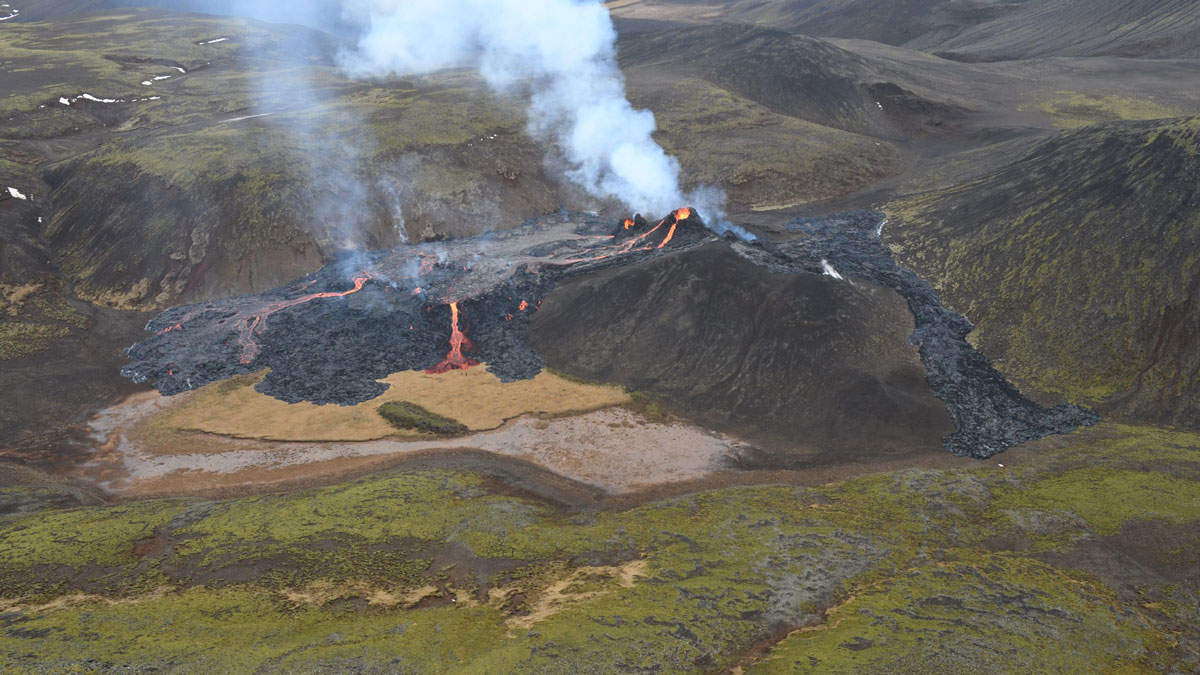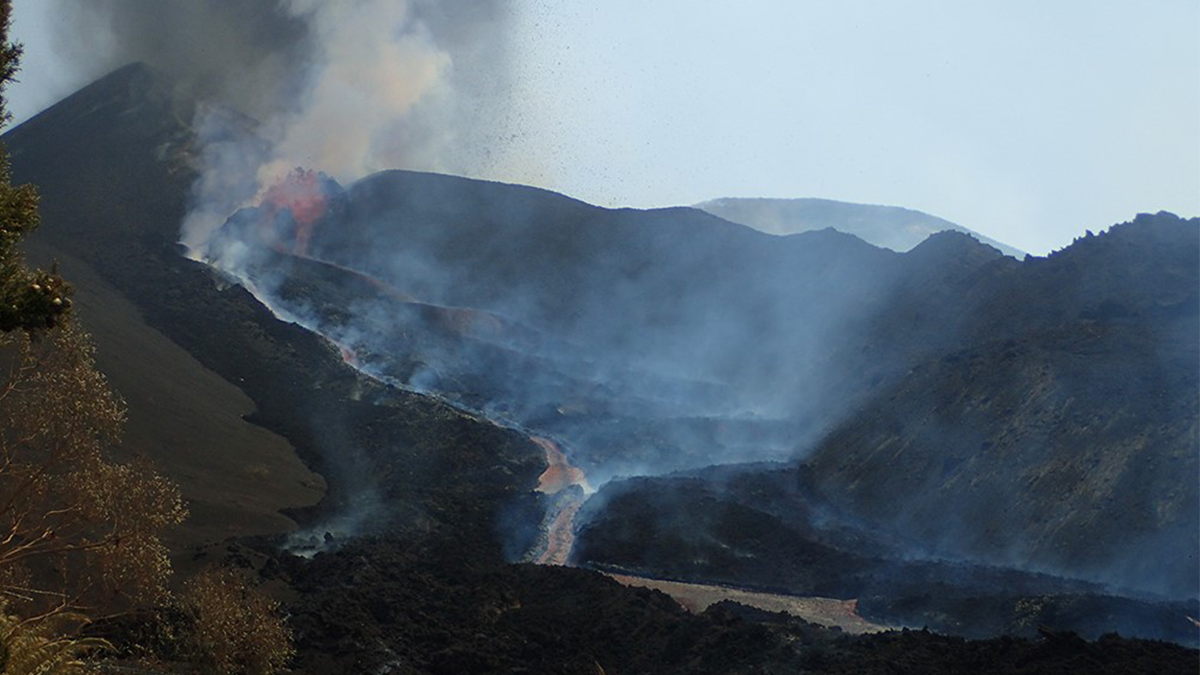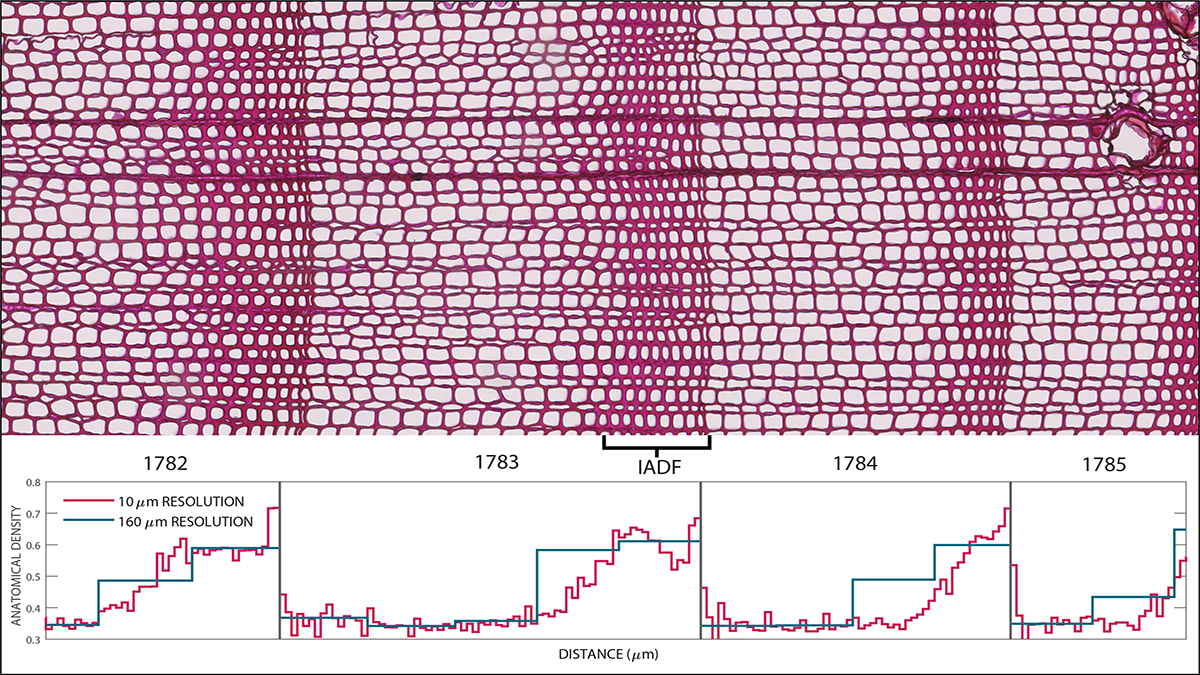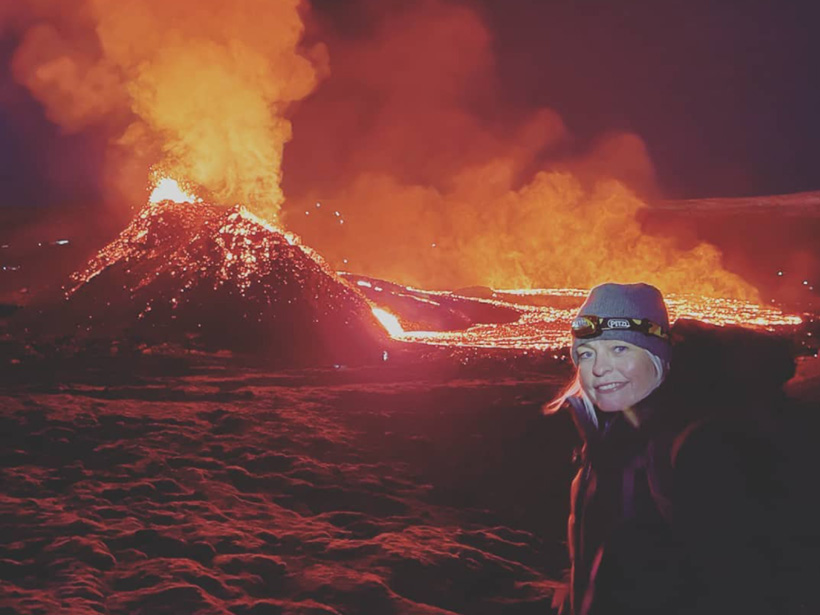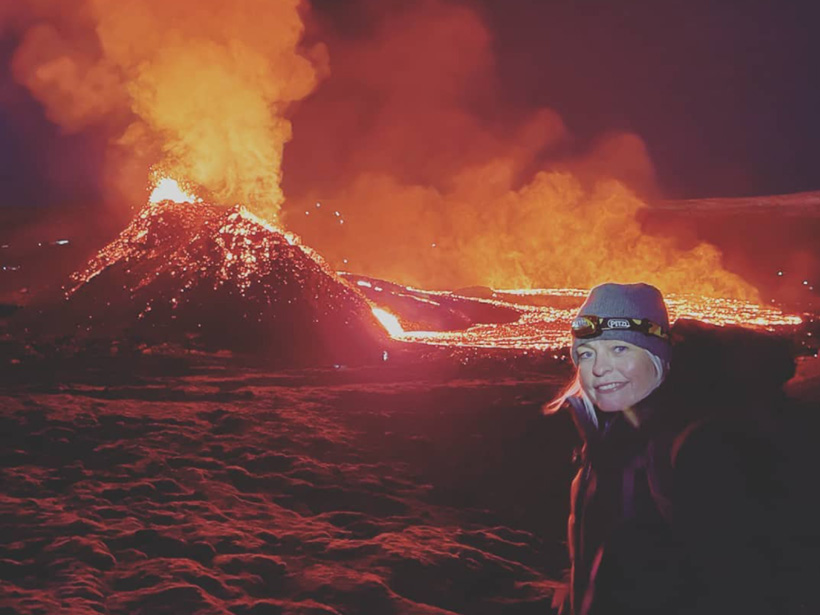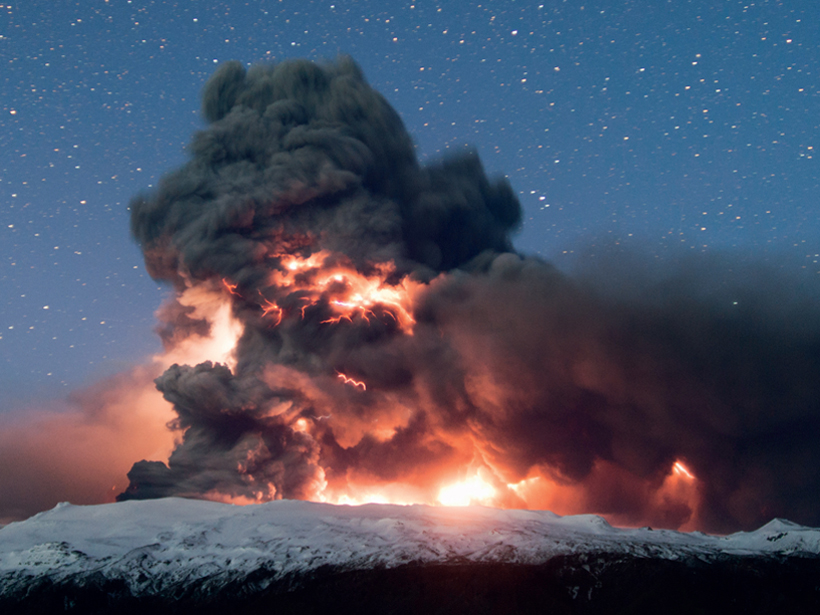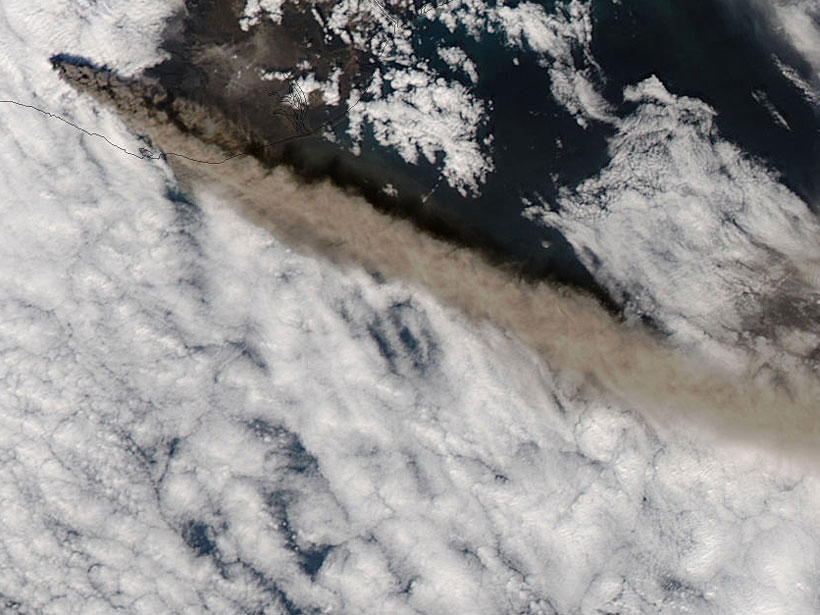Researchers used satellites and aerial data to create regularly updated maps of the Fagradalsfjall eruption for both the public and disaster response agencies.
Iceland
Dynamics of Volcanic Processes
A new cross-journal special collection invites contributions on modern approaches used to investigate dynamics of volcanic processes.
How Hot Was the Summer of 1783 Really? Trees Tell Tales
Volcanoes, heat waves, and tree rings – getting the seasonal story straight – a new study finds that volcanic fog lowered summer tree ring density despite the heat.
Innovative Model Elucidates Geothermal Energy Resource
Data from deep wells and a Bayesian modeling framework shed new light on one of Iceland’s valuable geothermal reservoirs.
Sensing Iceland’s Most Active Volcano with a “Buried Hair”
Distributed acoustic sensing offered researchers a means to measure ground deformation from atop ice-clad Grímsvötn volcano with unprecedented spatial and temporal resolutions.
Persiguiendo magma por la península de Reykjanes en Islandia
La Oficina Meteorológica de Islandia ha estado rastreando la agitación cerca de la erupción de Fagradalsfjall desde diciembre de 2019, mientras que investigadores en otros lugares exploran nuevos métodos para ver los enjambres sísmicos de Islandia.
Chasing Magma Around Iceland’s Reykjanes Peninsula
The Icelandic Meteorological Office has been tracking unrest near erupting Fagradalsfjall since December 2019, while researchers elsewhere explore new methods to see Iceland’s seismic swarms.
A Geologist’s Guide to Exploring and Understanding Iceland
A new book explores the geophysical processes that have shaped Iceland over 30 million years and continue to influence the landscape.
The Art of Volcanic Ash Modeling 10 Years After Eyjafjallajökull
The ash plumes from the eruption of the Icelandic volcano in 2010 disrupted air travel in Europe for several weeks. Since then, scientists have developed models to mitigate ash’s impacts.
Basalts Turn Carbon into Stone for Permanent Storage
Scientists have shown that mineral carbonation can permanently capture and store carbon quickly enough and safely enough to rise to the challenge of climate change.

